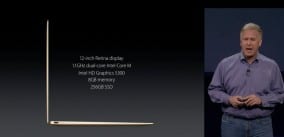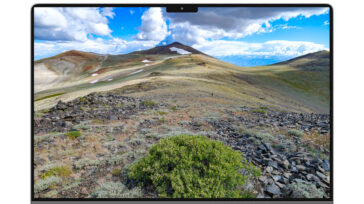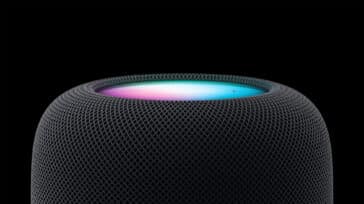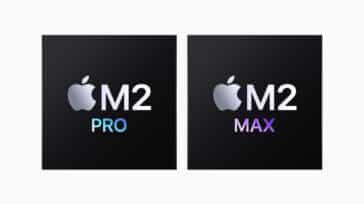
Unless you were on another planet or spelunking in a distant and deep cave, you probably paid attention to the Apple Spring Forward event yesterday. Perhaps the biggest non-Watch news to come out of the event was the introduction of the newest MacBook. This MacBook makes the MacBook Air seem chunky by comparison, coming in at a lightweight 2 pounds (.9 kg) and just .5 inches (13.1mm) thick at its thickest point. Most people were awed by the looks of the new MacBook, which comes in gold, space gray or silver. But upon closer examination, the MacBook becomes a bit of an enigma.
The MacBook definitely doesn’t compete with the much more powerful and weighty MacBook Pro. With a 1.1 GHz Intel Core M system on a chip (configurable up to 1.3 GHz), a standard and non-upgradeable 8GB of RAM, and either 256 GB or 512 GB of flash storage, the MacBook doesn’t exactly appear to be a speed demon (although we’ll have to see what benchmarks show us for real life conditions). It has exactly one port – a single USB-C connector – and a headphone jack. There’s no more MagSafe adapter, no Thunderbolt or Thunderbolt 2 connector, and not even an SD card reader.
Those who need more storage, RAM and speed are going to continue to go with the MacBook Pro. Anyone who needs multiple ports for connections to external monitors, Thunderbolt drives, or to grab photos off of SD cards will pretty much need to consider the MacBook Pro or MacBook Air. But wait, if the new MacBook is so light, won’t it eliminate the big selling point of the MacBook Air?
Probably not. Sure, the new device has the fancy Retina display, although that’s even somewhat controversial. Rather than providing the standard big-screen HD aspect ratio of 16:9, the MacBook has an oddball 16:10 aspect ratio. Watching a 16:9 movie or video on this display will leave a black gap at the top or bottom. That odd aspect ratio is shared with the 13-inch MacBook Air and the Retina MacBook Pros; at least the 11-inch MacBook Air uses a standard widescreen HD aspect ratio.
At an entry price of $1,299, the MacBook provides that relatively slow processor, a Retina display with an odd aspect ratio, no upgradeability path, and a single non-standard (at least at this point in time) port. For the same $1,299, you can purchase a 13-inch MacBook Pro with a much faster (2.7 GHz) Intel Core i5 system on a chip, a slightly larger Retina display with the same weird aspect ratio, a possibility of buying an upgrade to 16 GB of RAM, and slightly less (128 GB vs. 256 GB) flash storage. That same MacBook Pro comes with two Thunderbolt 2 ports, two standard USB 3.0 ports, an SDXC card slot, and an HDMI video output port.
So who is the new MacBook targeting? It’s certainly not power laptop users who would prefer the speed and expandability of the MacBook Pro. Likewise, the MacBook doesn’t have that much of a weight advantage over the MacBook Air, just a scant .38 pounds (172 grams) less.
I’m conjecturing that Apple is targeting people who have tried – unsuccessfully – to use a Retina iPad and external keyboard as a laptop replacement, because that’s what the new MacBook most resembles in terms of speed and ports. Now there are certainly some people who are able to use an iPad as their sole computer; blogger Federico Viticci at MacStories.net is famous for using an iPad Air for everything. I’ve tried, but found that in many cases I absolutely cannot live without a Mac OS X device for things like screencasting, video or audio editing, handling huge photo libraries, and so on. Why? I need the speed of a very fast processor and the accuracy of a touchpad.
If that is the target market, that’s not that big a target. Now Apple isn’t going to build a new laptop just for a small group of people, and my guess is that their research has shown that there are many people who need the light weight and thin profile of an extremely portable machine, don’t do any video or audio editing, don’t have large photo libraries, and just do email, word processing, social media work, and perhaps the occasional spreadsheet or presentation — all stored in the cloud. For those people, one port – used for charging – is enough. Wireless connectivity through Wi-Fi or personal hotspot does the trick for everything else, and the Retina display and fairly good battery life makes the new MacBook perfect for that market.
Will Apple get rid of the MacBook Air? Probably not, at least right now. At $899 for the 11-inch base model, it makes a great computer for students. If Apple is able to get the unit cost of manufacturing for this new MacBook down to the point that they can sell it for as little as $999 or so, I would begin to think that the MacBook Air would eventually disappear.
This is all my pure conjecture, but I’d love to hear what the readers here at the Rocket Yard think. Will the MacBook Air survive in the future? Can you survive with only a single port on your laptop? Leave those comments below.










Hi,Having owned one of these I think there are a great computer, but i was wondering how it would compare to a pro? Im thinking about buying a pro but I’m not sure how much better it is!
Hi Tegan, are you referring to a MacBook Pro, a MacBook Pro with Retina display or a Mac Pro?
I believe this machine is strongly targeted at female buyers/new (computer) users coming to Apple after loving their iPhone (which will be used for hotspot on this Mac).
First Mac for many, gold for the female fashionistas.
I don’t think the complaint about 16:10 is relevant to its primary use. Expecting 16:9 on all screens because movies have it is pretty silly on devices that aren’t primarily for playing movies. I find it short changes screen height, something not that big of a deal on a desktop monitor, but on small laptops it gets to be annoying. It’s easy to notice when comparing a typical tablet with an iPad.
Also, you can connect charge, USB and monitor at the same time with an adapter, so it’s like a docking adapter.
The 16 by 10 screen aspect ratio has been used by Apple for decades in various desktop and portable products.
You’ve made a good point suggesting that it’s intended to lure away—at twice the price—those who’re not quite happy with iPads or MBAs. This splits the difference.
Personally, I’m happy with what I have now with one exception. I’d like a keyboard and trackpad combination like this laptop but for my desktop.
When it was announced, I saw a few issues:
1. What happened to DisplayPort/Thunderbolt? How do you connect the device to an Apple Cinema Display?
2. Dongles? In 2015? Seriously?
3. For work, how often do you have a large file that you share via a USB key? Network and AirDrop are great, but what if you’re in a conference room, without WiFi, and you need to give a Word or PowerPoint file to someone who needs to put it on his/her PC? So you need a dongle for that, too? Another thing to remember to pack.
4. One of the supposed benefits of MagSafe was “you won’t send your computer flying when you trip over the power cord or it gets caught in a chair leg”. Guess we’ll once again get flying MacBook computers that will need service, and I suspect that the new machine will be non-serviceable.
“Can you survive with only a single port on your laptop?”
Anyone who needs the ports should buy the MacBook Air.
“Will the MacBook Air survive in the future? ”
See above. :-)